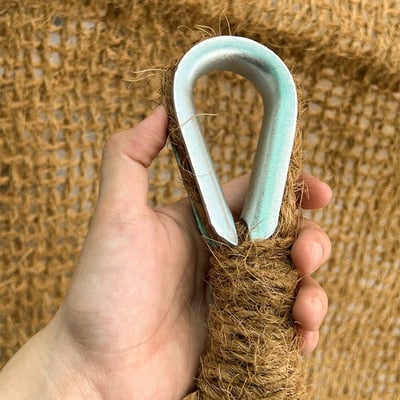Coconut fiber shade sails, how are they actually produced? Let's take a closer look at the fascinating process from coconut to shade sail.
1. Coconuts
The whole process starts with one of the most versatile fruits on earth: the coconut. The Mekong Delta in Vietnam is known for its numerous coconut plantations, particularly in the province of Bến Tre. A huge number of products (such as oil, sweets and milk) are made from coconuts, with the shell as a residual product.
2. Coconut fibers
The coconut fiber comes from the outer shell of the coconut. These fibers are naturally strong, stretchy and resistant to abrasion, making them perfect for various textile applications. The first step in creating coconut fiber is extracting the fiber from the coconut husk. This is usually done using machines that loosen the fibers by breaking and separating the husk.

3. Clean and dry
Once extracted, the fibers are thoroughly cleaned to remove impurities. They are then dried in the sun or using drying machines, depending on the available resources and the weather.

4. Spinning thread
The dried fibers are then spun into yarn. This can be done manually or mechanically, depending on the scale and technological resources of the factory. Spinning coconut fibers requires precision to ensure the yarn is strong and uniform.

5. Weaving
The yarn is then woven into large rolls of fabric. This can be done in different patterns and densities, depending on the final application of the shade sail. The looms are carefully adjusted to achieve the correct structure that both provides shade and allows air circulation.

6. Finishing
Finally, the shade sails are finished and checked for quality. During the finishing process, the canvases are reinforced in certain places with extra rope, depending on the size. Finally, stainless steel loops are added to hang the shade sail.



COMMENTS